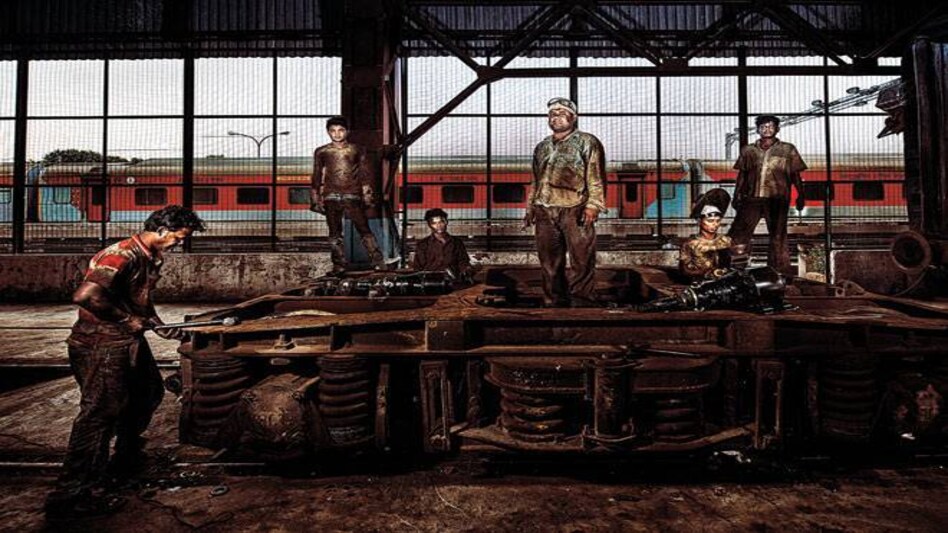 Railway employees working at Delhi's locomotive shed (Photograph By Vivan Mehra)
Railway employees working at Delhi's locomotive shed (Photograph By Vivan Mehra) Railway employees working at Delhi's locomotive shed (Photograph By Vivan Mehra)
Railway employees working at Delhi's locomotive shed (Photograph By Vivan Mehra)Indian Railways is the fifth biggest rail network in the world with 1.3 million employees and it is a massive task to streamline its operations.
Different Union governments and railway ministers have commissioned multiple studies on what ails the Railways and how to turn it around.
Railways Minister Suresh Prabhu is trying to restructure the Railways to make it more efficient. From upgrading the quality of coaches, adding Wi-Fi, running special trains like super luxury Tejas and modern Deen Dayalu to reducing costs, speeding up project execution, and dreaming up new ways of raising finances.
Though he seems to be clear that nothing should hold up work on his mission, Indian Railways still faces a lot of challenges.
The working of Indian Railways is caught up between making it a self-sufficient organisation and serving it as a transport system for the poor. The result being no rise in passenger fares and new trains and routes being decided on non-commercial reasons. The passenger fares usually remain static for years, burdening the Union Budget. In order to keep finances in check, freight charges have been raised in the past. But the discrepancy between freight charges and passenger fares seem to distort the Railways' performance. The recent decision of surge pricing of tickets in premium trains is a move in a correct direction. But biggest headache for Railways is expansion of their freight basket.
2. Operating Efficiency
Indian railways has a huge employee base of 1.3 million, which includes powerful workers' unions. It has become a centralised organisation with hierarchical decision-making. As a result, even simple decisions take years to resolve. Operating ratios are likely to get worse as costs pile up, including money for the 7th Pay Commission recommendations which is nearly Rs 28,000 crore this year to retirees and serving employees of Railways. The Railways is only ministry at present which gives back dividend on Gross Budgetary Support. Last year, they paid Rs 7,000 Cr to the finance ministry.
3. Finances and accounting
Indian Railways spends heavily on revenue expenditure - there is little left for capital expenditure. Indian Railways need to generate enough funds on its own for capital expenditure and also find new, non-government sources of funding in order to witness a noticeable change. But that can only happen if Railways is run as an efficient corporation with a healthy balance sheet that can be leveraged to raise debt. Prabhu is also looking at taking the investments in Railways to Rs 8.56 lakh crore by 2019. Next year onwards, there will be no separate Railway budget. At present it is only merger of speech with General Budget, but discussions are on to takeover liabilities of the Railways and merging the accounts with national financial records.
4. General inefficiencies
Indian Railways lags behind on a lot of parameters. In the previous fiscal, it missed most of its targets, including of electrification, track renewals, bridge works, and doubling of tracks. In 2014/15, projects worth Rs 6.5 lakh crore were stuck, including works related to doubling, new lines, gauge conversion, traffic facilities, and electrification. Today Railways faces a burden of Rs 4,83,511 crore for the execution of 458 unfinished projects.
5. Stranded projects
Suresh Prabhu is trying to complete unfinished projects. He has appointed mission directors to ensure smooth execution of these projects. He has started few trains in the past two years. He has come up with a five-year plan. Any faulty execution of projects could land Railways in a debt trap. Prabhu is focusing on station redevelopment, construction of new lines, debottlenecking the existing freight corridors, formulation of new suburban railway networks, restricting the lethargic Railway Board etc.